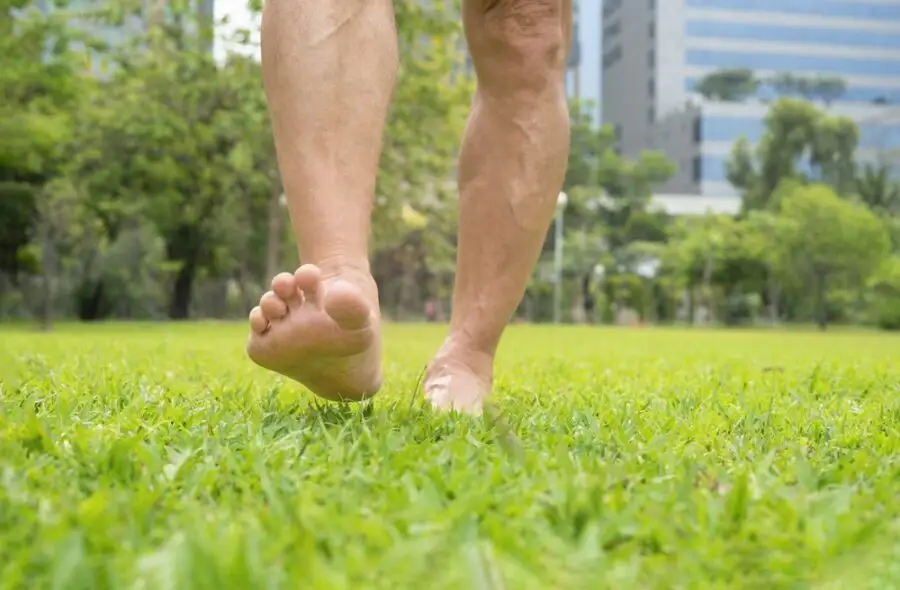
Are you over 50 and experiencing recurring foot pain? You’re not alone. Many people mistakenly believe that foot pain is just a natural part of getting older. But let’s be clear: aging doesn’t have to hurt—especially not your feet.
Understanding what truly causes these discomforts can help you stay active without unnecessary pain. After all, if your glasses don’t hurt your nose, why should your shoes hurt your feet?
How aging affects foot mechanics
As we age, our feet undergo natural transformations:
- The skin becomes drier
- Fat padding under the heel decreases
- Tendons lose flexibility
- Muscles weaken
These changes can disturb balance, trigger discomfort, and interfere with everyday tasks like walking or gardening. Even if you feel young at heart, your feet may be telling a different story.
Common age-related changes include:
- Loss of plantar fat pad: Less cushioning can lead to heel pain and plantar fasciitis.
- Reduced tendon flexibility: Alters walking mechanics, increasing joint stress.
- Muscle weakening: Leads to toe misalignment, causing hammer toes or bunions (hallux valgus).
- Dry skin: Leads to painful corns, calluses, and cracks.
- Toenail changes: Thickened or misshapen nails increase the risk of ingrown toenails.
Each of these modifications serves as a warning sign, not a verdict. Each signal can be decoded and treated. Your feet are talking. Are you listening?
Common sources of foot pain in seniors
Certain foot problems become more common with age. Do you feel as if you’re stepping on a hidden rock, or experience stabbing pain when getting out of bed? You’re not imagining things.
Plantar Fasciitis
This inflammation in the heel causes sharp morning pain when your feet hit the cold floor. Not the best wake-up call.
Osteoarthritis
A silent intruder, arthritis stiffens foot joints. Walking or even putting on shoes can feel like a chore. And no, your socks haven’t shrunk.
Hammer Toes and Bunions
These deformities create friction and discomfort, making shoes hard to fit and balance harder to maintain. You may feel like staying in slippers forever.
Ingrown Toenails and Thickened Skin
As tissues age, they become stiffer. Nails grow awkwardly. Calluses form. Every step can feel like punishment.
Morton’s Neuroma
A nerve irritation between toes, often caused by tight shoes. Feels like walking with a tiny rock stuck in your shoe—annoying and persistent.
How to manage foot discomfort as you age
Simple: when pain becomes consistent or returns often. When a walk around the block feels like a marathon. When you’re more familiar with your heating pad than your neighborhood.
A podiatrist offers a complete assessment:
- Posture and gait analysis
- Foot, nail, and skin examination
- Personalized care (custom orthotics, foot care, shoe recommendations)
The goal? Restore movement, comfort, and quality of life.
FAQ : Common Questions About Aging Feet
Is foot pain a normal part of aging?
No. It’s common, but not normal. Pain signals imbalance, strain, or inflammation—and all of these deserve attention.
Can better shoes fix everything?
Sometimes, yes. A good pair of shoes can work wonders. But persistent pain means it’s time to consult a professional. (And no, changing into slippers does not count.)
Do orthotics help?
They can. Orthotics offer support, relief, and proper alignment—like upgrading from a camping mat to a luxury mattress for your feet.
Getting older does not mean accepting foot pain. Your feet deserve attention, not resignation. If discomfort keeps showing up in your life, don’t wait. A podiatric consultation might be all it takes to transform your daily comfort. Find the closest clinic here: Find a clinic near you